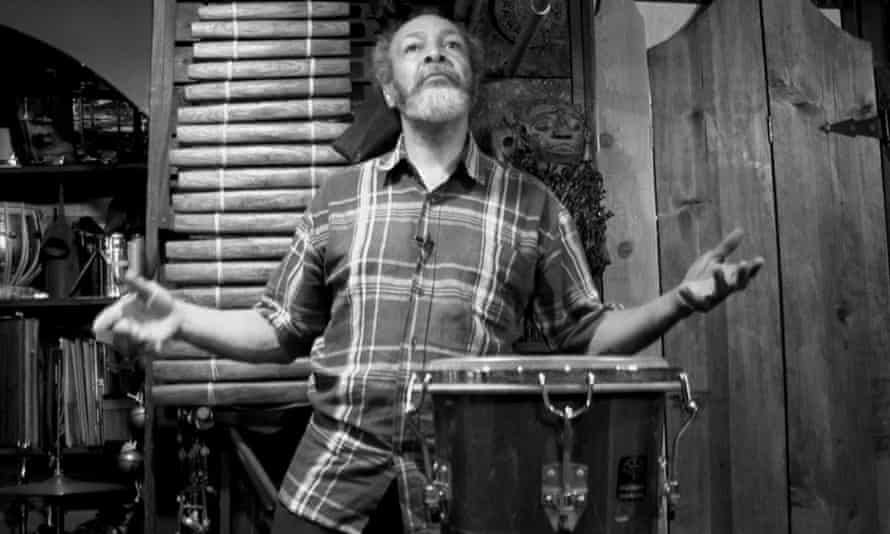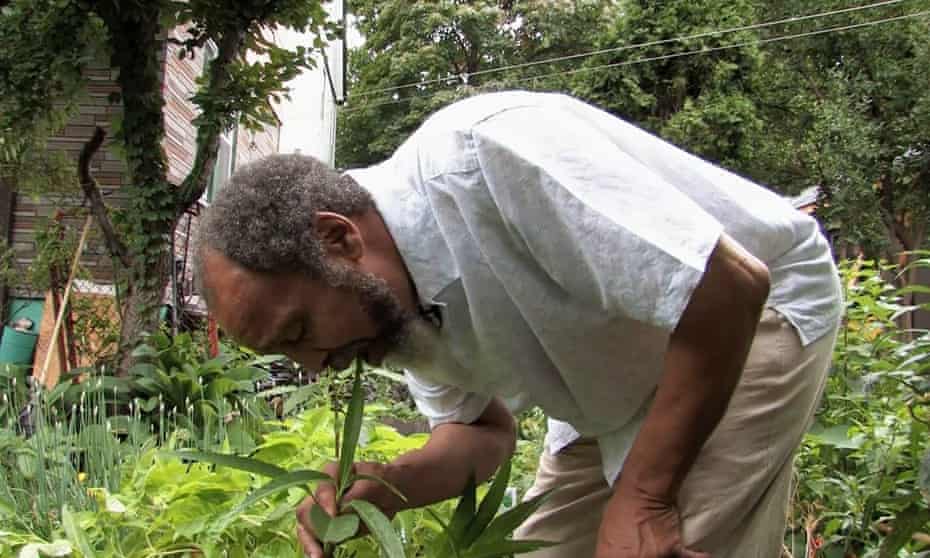An Atlanta based, opinionated commentary on jazz. ("If It doesn't swing, it's not jazz", trumpeter Woody Shaw). I have a news Blog @ News . I have a Culture, Politics and Religion Blog @ Opinion . I have a Technology Blog @ Technology. My Domain is @ Armwood.Com. I have a Law Blog @ Law.
Visit My Jazz Links And Other Websites
Atlanta, GA Weather from Weather Underground
Jackie McLean
John H. Armwood Jazz History Lecture Nashville's Cheekwood Arts Center 1989
Thursday, February 25, 2021
Friday, February 19, 2021
Tuesday, February 16, 2021
Monday, February 15, 2021
Johnny Pacheco, Who Helped Bring Salsa to the World, Dies at 85 - The New York Times
A Dominican-born bandleader and songwriter, he co-founded Fania Records, known as the Motown of Salsa.
:format(jpg):extract_cover()/https%3A%2F%2Fstatic01.nyt.com%2Fimages%2F2021%2F02%2F16%2Fobituaries%2F16pacheco1%2F16pacheco1-articleLarge.jpg%3Fquality%3D75%26auto%3Dwebp%26disable%3Dupscale)
Johnny Pacheco, the Dominican-born bandleader who co-founded the record label that turned salsa music into a worldwide sensation, died on Monday in Teaneck, N.J. He was 85.
His wife, Maria Elena Pacheco, who is known as Cuqui, confirmed the death, at Holy Name Medical Center. Mr. Pacheco lived in Fort Lee, N.J.
Fania Records, which he founded with Jerry Masucci in 1964, signed Latin music’s hottest talents of the 1960s and ’70s, including Celia Cruz, Willie Colón, Hector Lavoe and Rubén Blades. Mr. Pacheco, a gifted flutist, led the way on and off the stage, working as a songwriter, arranger and leader of the Fania All Stars, salsa’s first supergroup.
From the beginning, he partnered with young musicians who were stirring jazz, rhythm and blues, funk and other styles into traditional Afro-Cuban music.
By the 1970s, Fania, sometimes called the Motown of salsa, was a powerhouse in Latin music, and the Fania All Stars were touring the world. The label gave birth to combustive creative collaborations, like that between Mr. Colón, a trombonist and composer, and Mr. Blades, a socially conscious lyricist and singer; and to cult heroes like Mr. Lavoe, the Puerto Rican singer who battled drug addiction and died of AIDS-related complications at 46.
Fania dissolved in the mid-1980s amid lawsuits involving royalties, and in 2005, Emusica, a Miami company, purchased the Fania catalog and began releasing remastered versions of its classic recordings.
:format(jpg):extract_cover()/https%3A%2F%2Fstatic01.nyt.com%2Fimages%2F2021%2F02%2F16%2Fobituaries%2F16pacheco3%2Fmerlin_15603813_8510b708-9f5d-43f7-9ce6-2905bb8c93e6-articleLarge.jpg%3Fquality%3D75%26auto%3Dwebp%26disable%3Dupscale)
Juan Azarías Pacheco Knipping was born on March 25, 1935, in Santiago de los Caballeros, in the Dominican Republic. His father, Rafael Azarias Pacheco, was a renowned bandleader and clarinetist. His mother, Octavia Knipping Rochet, was the granddaughter of a French colonist and the great-granddaughter of a German merchant who had married a Dominican woman born to Spanish colonists.
The family moved to New York when Johnny was 11, and he studied percussion at the Juilliard School and worked in Latin bands before starting his own, Pacheco y Su Charanga, in 1960.
The band signed with Alegre Records, and its first album sold more than 100,000 copies in the first year, becoming one the best-selling Latin albums of its time, according to his official website. It jump-started Mr. Pacheco’s career with the introduction of a new dance craze called the pachanga. He became an international star, touring the United States, Europe, Asia and Latin America.
Fania Records was born out of an unlikely partnership between Mr. Pacheco and Mr. Masucci, a former police officer turned lawyer who fell in love with Latin music during a visit to Cuba.
From its humble beginnings in Harlem and the Bronx — where releases were sold from the trunks of cars — Fania brought an urbane sensibility to Latin music. In New York, the music had taken on the name “salsa” (Spanish for sauce, as in hot sauce), and the Fania label began using it as part of its marketing.
Guided by Mr. Pacheco, artists built a new sound based on traditional clave rhythms and the genre Cuban son (or son Cubano), but faster and more aggressive. Many of the lyrics — about racism, cultural pride and the tumultuous politics of the era — were far removed from the pastoral and romantic scenes in traditional Cuban songs.
In that sense, salsa was “homegrown American music, as much a part of the indigenous musical landscape as jazz or rock or hip-hop,” Jody Rosen wrote in The New York Times in 2006 on the occasion of the reissue of the Fania master tapes — after they had spent years gathering mold in a warehouse in Hudson, N.Y.
Mr. Pacheco teamed up with Ms. Cruz in the early 1970s. Their first album, “Celia & Johnny,” was a potent mix of hard-driving salsa with infectious choruses and virtuosic performances. It soon went gold, thanks to Ms. Cruz’s vocal prowess and Mr. Pacheco’s big-band direction, and its first track, the up-tempo “Quimbara,” helped propel Ms. Cruz’s career to Queen of Salsa status.
The two released more than 10 albums together; Mr. Pacheco was a producer on her last solo recording, “La Negra Tiene Tumbao,” which won the Grammy for best salsa album in 2002.
Over the years, Mr. Pacheco produced for several artists and performed all over the world, and he contributed to movie soundtracks, including one for “The Mambo Kings,” a 1992 film based on based on Oscar Hijuelos’s novel “The Mambo Kings Play Songs of Love.” For the Jonathan Demme movie “Something Wild,” he teamed up with David Byrne, leader of the Talking Heads, one of his many eclectic partnerships.
Mr. Pacheco, the recipient of numerous awards and honors both in the Dominican Republican and the United States, was inducted into the International Latin Music Hall of Fame in 1998. He wrote more than 150 songs, many of them now classics.
For many years he spearheaded the Johnny Pacheco Latin Music and Jazz Festival at Lehman College in the Bronx, an annual event in collaboration with the college (streamed live in recent years) that provides a stage for hundreds of talented young musicians studying music in New York City schools.
In addition to this wife, Mr. Pacheco’s survivors include two daughters, Norma and Joanne; and two sons, Elis and Phillip.
The salsa phenomenon that Mr. Pacheco created hit a new high on Aug. 23, 1973, with a volcanic sold-out show at Yankee Stadium, where the Fania All Stars brought 40,000 fans to a musical frenzy, led by Mr. Pacheco, his rhinestone-encrusted white shirt soaked in sweat. The concert cemented the band’s, and his, legendary stature.
In 1975, Fania released the long-awaited double album “Live at Yankee Stadium,” which, despite the name, also included material from a show at the Roberto Clemente Coliseum in Puerto Rico that had much better sound quality. The album earned the Fania All Stars their first Grammy nomination for best Latin recording.
In 2004, the Library of Congress added it to the National Recording Registry.
Michael Levenson contributed reporting."
Sunday, February 14, 2021
Milford Graves: the pioneering drummer whose naturalistic rhythms freed up jazz
“Milford Graves: the pioneering drummer whose naturalistic rhythms freed up jazz

Last modified on Sun 14 Feb 2021 07.35 EST
Of all the freedoms opened up by the free-jazz revolution of the 1960s, none was more radical or, to many, disturbing than the freeing of rhythm from fixed points of bar lines and regular time signatures. The American drummer Milford Graves, who has died aged 79, was in the forefront of that move to create momentum through surges of energy that seemed to reflect the social and political passions driving what became known simply as the new music.
Graves collaborated with many of the movement’s leaders, including the pianist Don Pullen and the saxophonist Albert Ayler, in a long and influential career as a performer. But he was much more than that. In the description of the composer and saxophonist John Zorn, he was its shaman: a student – and eventually teacher – of many disciplines, from linguistics and human biology to martial arts.
Like that of his contemporary Sunny Murray, Graves’s drumming appeared to reject the clarity and technical sophistication, with its origins in military-band rudiments, developed over decades by jazz drummers and brought to a peak in the bebop era by the likes of Max Roach. Sometimes he would use tree branches or other implements instead of regular drumsticks. He threw away the snare that gave the snare drum its crisp sound and detuned his tom-toms, removing the bottom heads (skins) to create a different projection of the sound. Sceptics viewed all this as a reversion to primitivism. In fact, it was another kind of sophistication, reaching for inspiration back into the music’s deepest origins.

“I work for natural sounds rather than trying to sound like drums,” he told Val Wilmer in the 1970s. “Sometimes I try to sound like car motors or the continuous cracking of glass.” Disciples of Buddy Rich were duly scandalised.
Born in the New York borough of Queens in 1941, Graves began by playing conga drums and timbales in Latin groups, some of them featuring a young classically trained pianist named Chick Corea. Facing prejudice against non-Latino players in that environment, Graves refused to do what many others were doing and change his name to something that sounded Hispanic.
Invited by his fellow percussionist Don Alias to take part in a summer school in Boston in 1963, he met the saxophonist Giuseppi Logan and for the first time started using a conventional drum kit. With Logan he began to explore the possibilities offered by non-metred rhythms; back in New York they fell in with a crowd of musicians playing mostly in coffee houses who eventually, under the aegis of the trumpeter Bill Dixon, coalesced into the following year’s October Revolution in Jazz, a festival at the Cellar Café featuring Logan and Graves alongside the groups of the pianists Sun Ra and Paul Bley, the saxophonist John Tchicai and others.
Soon Graves was appearing on the ESP label’s recordings by Logan, Bley and the New York Art Quartet, a highly influential group led by Tchicai and the trombonist Roswell Rudd. In 1966, he and Pullen recorded a duo concert at Yale University and released it on their own label, hand-painting the covers of albums that would become highly prized collectors’ items. The following year he joined the quartet of Albert Ayler; they played at the Newport Jazz festival and, three weeks later, opened John Coltrane’s funeral in St Peter’s Lutheran Church in New York City, an emotional ceremony closed by Ornette Coleman’s quartet.
Graves left Ayler when the saxophonist began to head in a more commercial direction. Thereafter his appearances on record were sporadic, although they included the guitarist Sonny Sharrock’s Black Woman and two albums of solo percussion on Zorn’s Tzadik label.
He life took a different turn in 1973 when, at Dixon’s invitation, he accepted a teaching post in the Black Music department at Bennington College, a liberal arts establishment in Vermont. The students in his first year were almost uniformly white – “they weren’t speaking no ghetto language,” he said – but he would spend the next 39 years there imparting the wisdom collected through his own studies in many fields, in particular, the fluctuations of the human heartbeat, through which he explained his own approach to rhythm. As he told Alan Licht in an interview for The Wire magazine: “All you gotta do is feel your wrist pulse, and start counting, and you’re gonna find yourself at times counting a little faster and a little slower. You’re not gonna have a steady beat. If you do have a steady beat, that’s dangerous. Extremely dangerous.”
In place of that steady beat, Graves discovered rhythms that required a different drummer: one with a knowledge of gardening and herbalism, of algorithms and acupuncture, of painting and sculpture, who studied the neuromuscular properties of Chinese or Yoruba singing as well as Indian drumming; one who collaborated with Lou Reed and the Japanese dancer Min Tanaka, and who created his music in the way he cooked his meals, with ingredients from around the world and the rhythms of the human heart.’